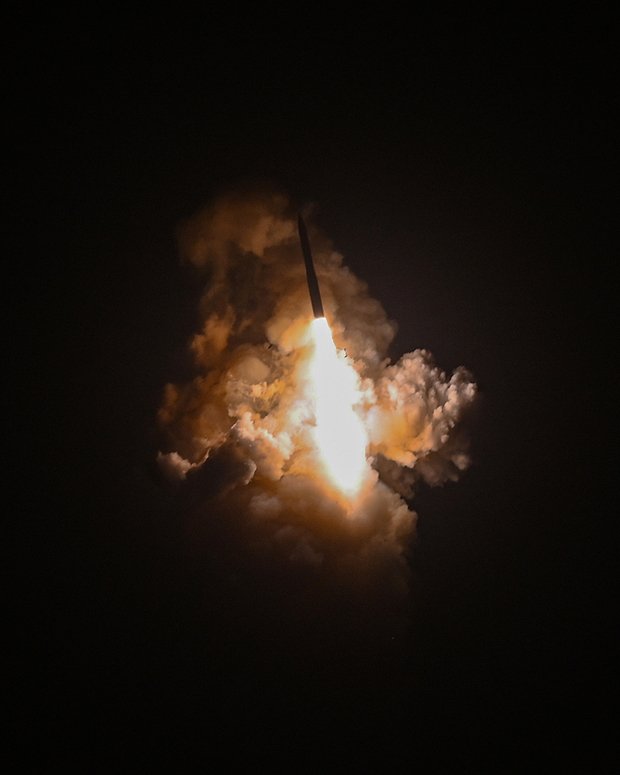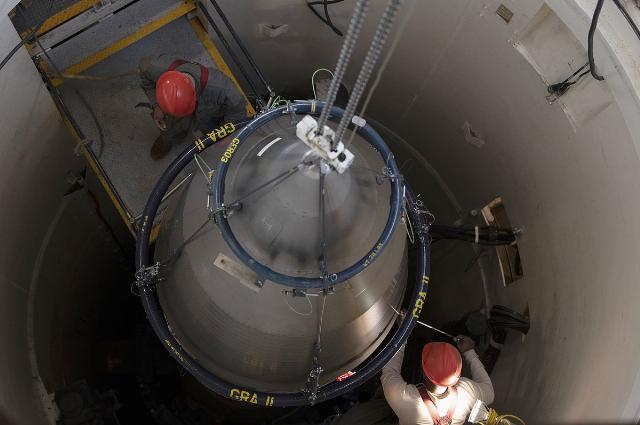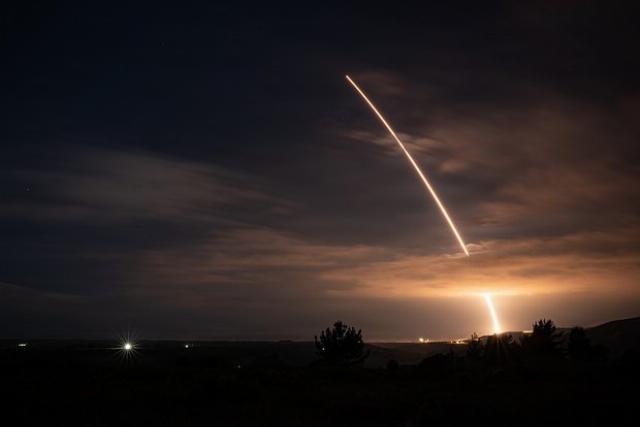The United States conducted a test launch of the Minuteman III intercontinental missile
On Wednesday, November 5, it became known that the US Space Forces conducted a test launch of the Minuteman III intercontinental ballistic missile (ICBM). According to the 30th Space Force Wing, the rocket flew about 6,700 kilometers without a warhead and reached the Ronald Reagan test site on Kwajalein Atoll in the Republic of the Marshall Islands. The ICBM was launched from the Vandenberg base (California).
The tests of the missile, which forms the basis of the ground component of the US nuclear triad, have attracted particular attention against the background of recent statements by US President Donald Trump about nuclear weapons tests.
"I have instructed the Ministry of War to begin testing our nuclear weapons on an equal footing," he wrote.
As part of the launch, the effectiveness of the Minuteman ICBM was tested.
On the eve of the tests, a message on the Vandenberg base website noted that the main purpose of the launch was to test the effectiveness of the main Minuteman systems.
Following the test results, the 30th Space Force Wing reported that the launch confirmed the reliability of the Minuteman III.
US Space Force
The United States regularly conducts tests of the Minutemen
Vandenberg base emphasized that the schedule of test launches of the Minutemen was drawn up "years ago." The US military regularly conducts ICBM tests. Previously, rocket test launches were conducted in February and November 2024, and in June of the same year, two launches took place in a week.
 |
| The launch of the Minuteman III rocket during tests in May. |
| Source: www.dvidshub.net |
They warn about such tests in advance, and the wording about the goals of the launches is sometimes changed. For example, in June, the US Space Force Command stated that the tests "will demonstrate the readiness of the US nuclear forces and provide confidence in the lethality and effectiveness of national nuclear deterrence."
There is also an opinion that today's launch of the Minuteman is a kind of response to reports of tests of Russia's new strategic weapons. Andrei Kolesnik, a member of the State Duma's defense committee, adheres to it. At the same time, he stressed that it was too early to talk about another arms race.
What are Minuteman III missiles capable of?
The Minuteman 3 ICBM was adopted by the US Air Force in 1970. Since then, it has remained the only silo-based ICBM in Washington's arsenal. More than four hundred missiles are on combat duty at air bases in Montana, Wyoming and North Dakota.
kilometers
Minuteman III ICBM range
The three-stage rocket is more than 18 meters long and weighs about 36 tons and has a range of 14 thousand kilometers. Minuteman III is regularly upgraded as part of several programs. For example, the Guidance Replacement Program, which was launched in 1996, provides updates to missile guidance system components. In 2002 — 2009, the missiles received more advanced W87 warheads with a capacity of 300 kilotons, and since 2004, the Minutemen have been replacing the main engine components.
 |
| LGM-30G Minuteman III. |
| Source: U.S. Air Force / Staff Sgt. Michael A. Richmond |
Minuteman III is considered an analogue of the Russian Poplar
The closest analogue of the Minuteman is considered to be the ICBM of the Soviet and Russian mobile ground-launched missile system (PGRK) Topol, which was decommissioned in 2023. It was replaced by more advanced "Yars" — mobile and mine-based.
The first test launch of the Yars rocket took place in 2007. The solid-fuel ICBM carries a separable warhead with individual guidance units. The PGRK received a system for recalculating flight assignments, which allows launching from any site on the patrol route. It is believed that the missile carries 3-4 warheads with a capacity of up to 500 kilotons.
The US Department of Energy talked about subcritical nuclear tests
After Trump's words about the tests, US Energy Secretary Chris Wright ru/news/2025/11/02/ v-ssha-rasskazali-o-predstoyaschih-yadernyh-ispytaniyah" target="_blank" rel="nofollow">stated that they plan to conduct subcritical explosions as part of nuclear weapons tests. This will make it possible to check all the components of nuclear weapons, except for the nuclear warhead.
 |
| Minuteman maintenance. |
| Source: U.S. Air Force / Senior Airman Abbigayle Williams |
Similar experiments have also been conducted repeatedly. So, in May 2024, the Ministry of Energy conducted tests at the Nevada test site — this is the first experiment in a series of Nimble tests. "The experiment was conducted in accordance with the voluntarily imposed moratorium on testing nuclear explosive devices, which the United States has maintained since 1992, and there was no self—sustaining supercritical chain reaction," the department said.
In 2019, the Livermore National Laboratory conducted the Ediza experiment, during which plutonium was detonated. The results of the study were used to improve the physical models used in assessing the safety of nuclear arsenals.
Putin promised to respond to nuclear tests
Russian President Vladimir Putin, during a meeting with the Security Council, recalled that Moscow had warned about the response to nuclear tests by other countries.
"Back in my message to the Federal Assembly in 2023, I said that if the United States or other states parties to the relevant Treaty conduct such tests, then Russia will also have to take appropriate retaliatory actions," he said.
At the same time, the head of state stressed that Russia has always strictly adhered to the Comprehensive Nuclear-Test-Ban Treaty (CTBT) and has no plans to deviate from these obligations. The president also instructed to work out the issue of the expediency of starting preparations for such tests.
The CTBT expands to an unconditional extent the restrictions imposed by the Treaty on the Prohibition of Nuclear Weapon Tests in the Atmosphere, Outer Space and Underwater.

